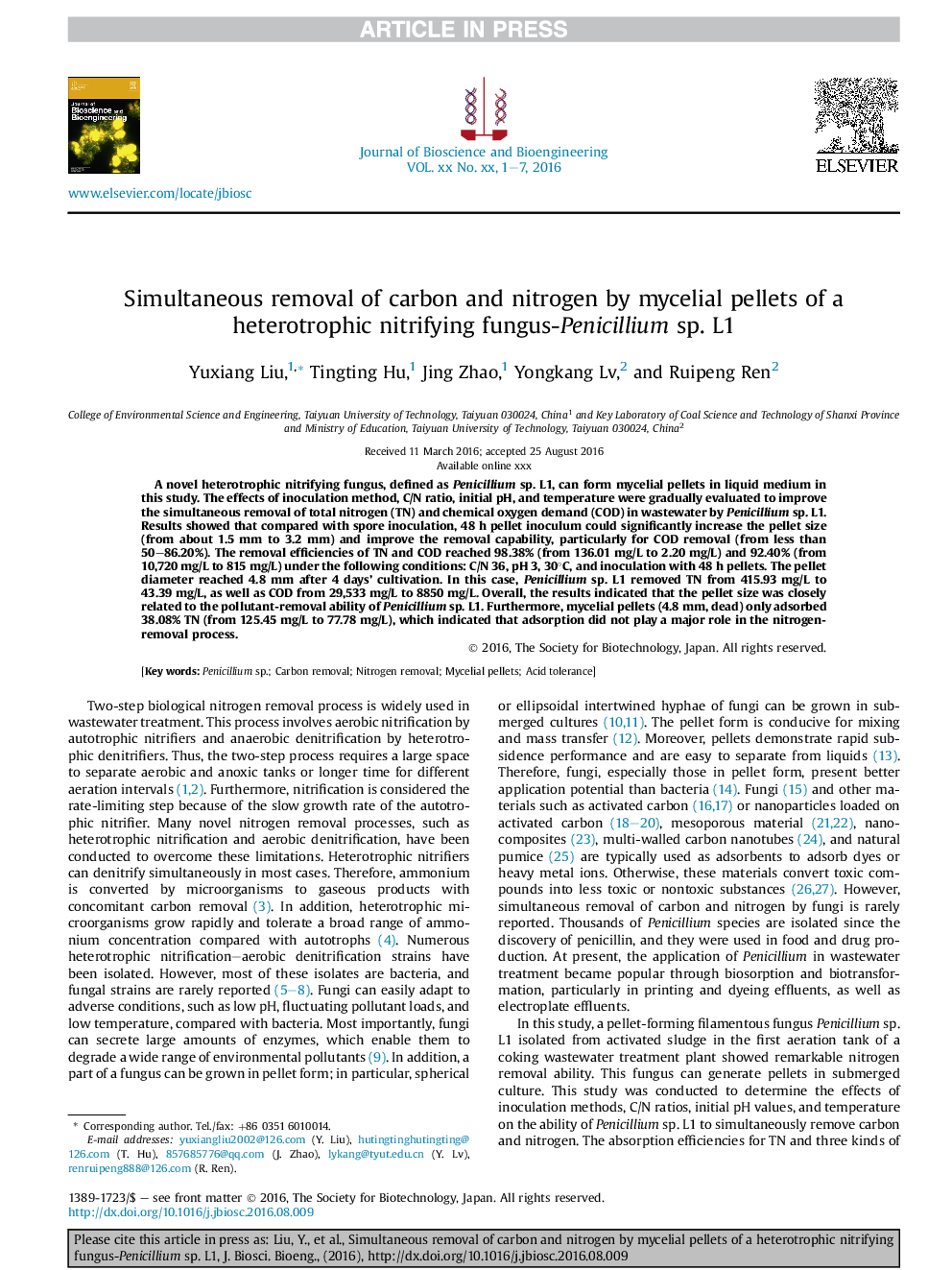| Article ID | Journal | Published Year | Pages | File Type |
|---|---|---|---|---|
| 4753432 | Journal of Bioscience and Bioengineering | 2017 | 7 Pages |
Abstract
A novel heterotrophic nitrifying fungus, defined as Penicillium sp. L1, can form mycelial pellets in liquid medium in this study. The effects of inoculation method, C/N ratio, initial pH, and temperature were gradually evaluated to improve the simultaneous removal of total nitrogen (TN) and chemical oxygen demand (COD) in wastewater by Penicillium sp. L1. Results showed that compared with spore inoculation, 48 h pellet inoculum could significantly increase the pellet size (from about 1.5 mm to 3.2 mm) and improve the removal capability, particularly for COD removal (from less than 50-86.20%). The removal efficiencies of TN and COD reached 98.38% (from 136.01 mg/L to 2.20 mg/L) and 92.40% (from 10,720 mg/L to 815 mg/L) under the following conditions: C/N 36, pH 3, 30°C, and inoculation with 48 h pellets. The pellet diameter reached 4.8 mm after 4-day cultivation. In this case, Penicillium sp. L1 removed TN from 415.93 mg/L to 43.39 mg/L, as well as COD from 29,533 mg/L to 8850 mg/L. Overall, the results indicated that the pellet size was closely related to the pollutant-removal ability of Penicillium sp. L1. Furthermore, mycelial pellets (4.8 mm, dead) only adsorbed 38.08% TN (from 125.45 mg/L to 77.78 mg/L), which indicated that adsorption did not play a major role in the nitrogen-removal process.
Related Topics
Physical Sciences and Engineering
Chemical Engineering
Bioengineering
Authors
Yuxiang Liu, Tingting Hu, Jing Zhao, Yongkang Lv, Ruipeng Ren,
